Plants in an aquarium have been very vital both in maintaining a balanced ecosystem for the fish and enhancing the beauty of the home aquarium. However, fertility is important for them to flourish to an optimal level that should be achieved in the garden. The absence of nutrients will stunt plant growth, change the color of the leaves, and not have a healthy look throughout.
Content Table
Here in this article, we are going to discuss various kinds of fertilizers, CO2 supplementation, the right time to start feeding, dangers from over-fertilization, and a mere list of the fertilized planted aquariums are discussed.
Aquarium Plants Liquid Fertilizer Requirement
It is distinguished that liquid fertilizers also supply macronutrients and micronutrients to the aquarium plants. The most important ones are:
1. Macronutrients
These macronutrients include nitrogen (N), phosphorus (P), and potassium (K). The N and P are most essential for growth of the leaves and root respectively while K is vital for growth strength of the plant. Lack of nitrogen leads to yellowing of leaves, while phosphorus deficiency results to short stature.
2. Micronutrients
Several of them include Iron (Fe), magnesium (Mg), and a suite of trace elements such as manganese (Mn) and zinc (Zn). Iron enhances the synthesis of chlorophyll causing green leaves, while magnesium is necessary for photosynthesis process among others. Finally, due to the poorer production of chlorophyll, fast-growing plants will be abnormally pale or turn yellow.
3. Comprehensive Fertilizers
Super complementary liquid fertilizers, including the all-in-one fertilizers, containing all types of nutrients in the correct proportions. Large planted tanks may need supplementation of the individual elements in order to sustain the growth of the plants. The rate of its application is based on plant requirement and the progression of any deficiency issues, in order to appropriately fertilize.
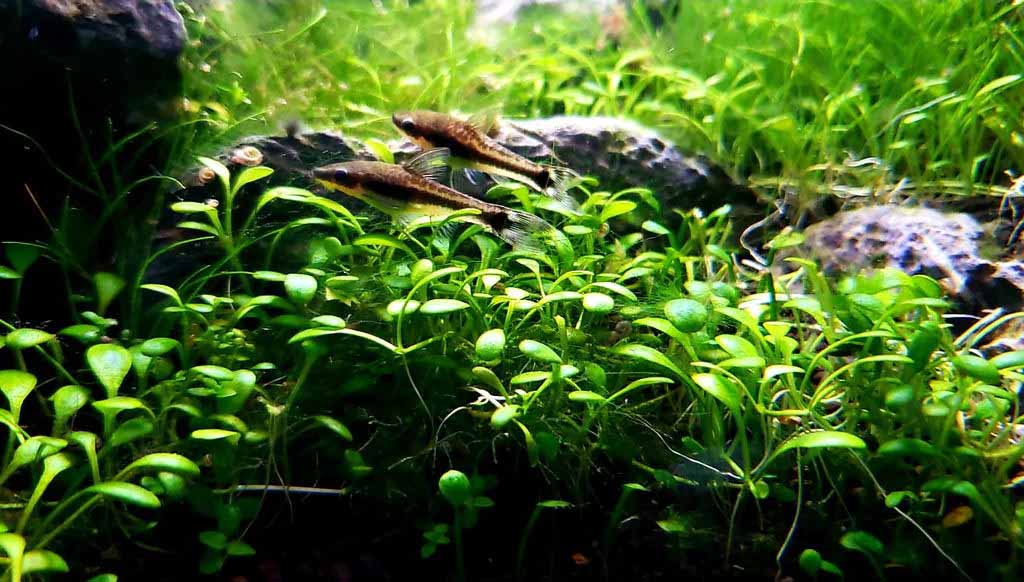
fertilizing aquarium plants
CO2 Fertilization for Planted Aquariums
Carbon dioxide (CO₂) is an essential component for photosynthesis, and different plant species require varying levels of CO₂:
- Low-tech aquariums (low-light plants): Java fern, Anubias, and Cryptocoryne do not require additional CO₂ injections. Some occasional liquid carbohydrate sources can be used. Although these plants grow relatively slowly, the constant water flow assists in circulating available CO² from fish respiration and water surface disturbance.
- Medium-tech aquariums (moderate-light plants): Some equipment such as CO₂ injectors are useful for plants such as Ludwigia & Rotala but liquid carbon dosing works here as well. Better CO₂ applications such as stainless steel CO₂ diffusers or CO₂ inline reactors are useful though they should be used with constant lighting and CO₂ feeding practices.
- High-tech aquariums (high-light plants): Some of the plants such as Glossostigma and HC Cuba ought to be grown under pressurized CO₂. Specifically, these plants experience difficulties in competing with algae when the level of CO₂ is low. If the CO₂ concentration ranges from 20-30 ppm, light intensity, and fertilizer, there are no deficiencies to hinder the plants making the bottom become like a carpet.
When to Start Fertilizing Aquarium Plants
The right time to start fertilizing depends on several factors:
1. Newly set-up tanks
Fertilization should be carried out 2–3 weeks after planting since plants develop roots and obtain nutrients from water. This is because the nutrients ferment in water and the plants have not developed the capability to absorb all the nutrients that are introduced by use of fertilizers. At this stage, root-feeding plants such as Amazon swords and crypts can benefit from root tabs.
2. Mature tanks
The practices of fertilization should be determined by the rate and nutrient demand of the plant. It has also been established that stem plants that grow at a faster rate need more feeding intervals than stem plants that are slow growers. Indication of plant health (color of the leaves) or lack thereof of possible deficiency, such as yellow leaves, stunted growth, etc, assists in the determination of the right dosage to administer.
3. After water changes
Feeding is done to replace the nutrients loss during the process of water change in a ratio of 30-50%. With CO₂-injected tanks, the macros such as NPK should be applied in the morning, and the micros including iron and trace elements in the evening to reduce interferences that hinder nutrient uptake.
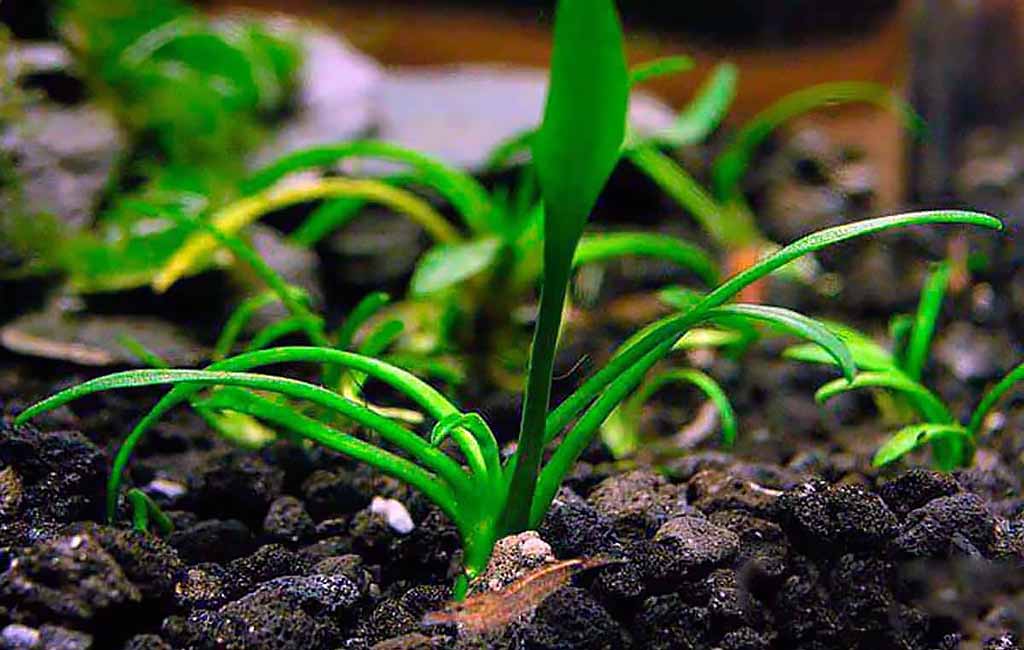
start fertilizing aquarium plants
When You Over Fertilize Aquarium Plants
Over-fertilization can have negative consequences, including:
1. Algae Blooms
The water contains phosphates and nitrates and if present in large proportions it causes nuisance algae growths. Green spot algae, hair algae, and black beard algae are some of the most common alga problems that occur in the fish tank especially when the nutrient concentrations in the water are abnormal especially high lamp intensity and low CO2 supply. A management method using an agreed fixing time for water sampling and a recommended amount for dosing inhibits algae growth.
2. Nutrient Imbalance
Excessive or lack of one nutrient may adversely affect the uptake of other nutrients which hampers plant growth. For instance, there are cases whereby the presence of one element hinders the absorption of another and one of these is iron which hinders manganese and results in chlorosis. In the same way, high nitrates are not well taken with phosphates also leads to low plant growth. Macros and micronutrients should therefore be balanced and this includes the three primary nutrients nitrogen, potassium, and phosphorus.
3. Poor Water Quality
These are likely to affect water quality and in turn, affect the fish and other aquatic creatures in the aquarium. High concentrations of nitrate (>40 ppm) can affect the health of the fish negatively while organic accumulation from unutilized fertilizers decreases the level of dissolved oxygen. They include washing the tanks at normal intervals to replace the water with fresh ones and feeding the fish at the correct times.
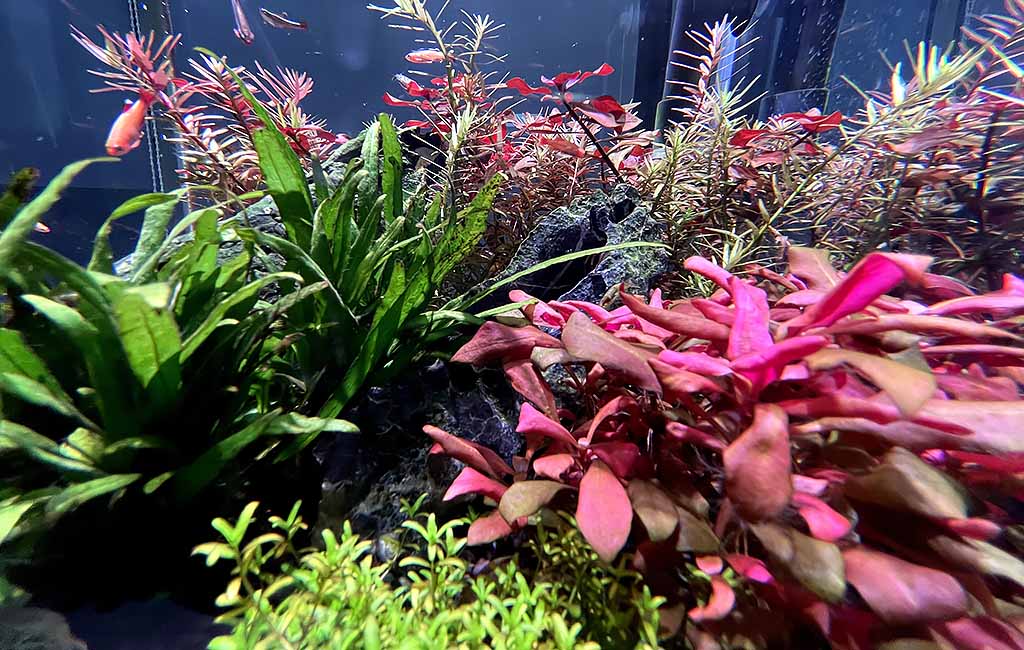
plant fertilizer schedule
Fertilizer Dosing Guide and Schedule for Planted Aquariums
Fertilizer Dosing Guide
- Low-tech aquariums (no CO₂, low light)
Liquid fertilisers shall be applied 1-or 2 times per week and the preferred fertilisers are the multipurpose fertilisers that contain important macro and micro-elements. Crypt and sword plants which are root feeding plants need to be provided with root tabs every fortnight to every six weeks. This is because algae growth can occur if the nutrients in the water are slowly taken up by the plants hence should not over dose it.
- Medium-tech aquariums (moderate light, liquid carbon)
Apply liquid fertilizers about three to four times a week since the plants have a moderate growth rate. It is recommended to apply NPK fertilizers on consecutive days and iron and trace elements within the periods in between. The condition of plant health should be regularly monitored to be able to make appropriate dose corrections.
- High-tech aquariums (high light, pressurized CO₂)
Apply fertilizers to increase productivity to meet the needs of the plants daily. Both; High-intensity lighting and CO₂ injection help promote growth and would need a schedule that includes an estimative index method where nutrients are always added and the excess volatized through water changes, weekly. The nutrients must be constant to avoid deficiencies and promote the growth of the plants.
Fertilizer Dosing Schedule for Aquarium Plants
A common dosing method is the Estimative Index (EI) method via a dosing pump, which ensures plants receive ample nutrients while excess nutrients are removed via weekly water changes.
Example Fertilization Schedule:
This schedule ensures plants receive consistent nutrition while preventing nutrient build-up that can lead to algae issues.
| Day | Macronutrients (N, P, K) | Micronutrients (Fe, Trace) | CO2 | Water Change |
| Monday | Dose | – | On | – |
| Tuesday | – | Dose | On | – |
| Wednesday | Dose | – | On | – |
| Thursday | – | Dose | On | – |
| Friday | Dose | – | On | – |
| Saturday | – | Dose | On | – |
| Sunday | – | – | Off | 50% change |
Algae and Fertilizers
This is important in managing the growth of algae since several elements can cause an overpopulation of algae. Some common algae issues include:
- Green Spot Algae (GSA):
Caused by low phosphate (PO₄) levels and excessive light exposure. It is manifested in the form of hard green spots on the leaves and glasses. Phosphate should be limited to 0.5 – 1 ppm at most, while the photoperiod should be lowered if algae are still present.
- Black Beard Algae (BBA)
This is associated to variation of CO₂ levels and inadequate water flow. It grows irregular vegetation at the margins and cracks of hard surfaces or at times it grows in tufted formations. CO₂ should be kept at 20-30 ppm and the tank should be properly running, hydrogen peroxide might be used as a tank spot-treatment..
- Hair Algae
Algae growth on substrates can be caused by high iron presence or irregular nutrient concentrations. It is seen as slender threads that coil around the plants. One should reduce the iron concentrations in the aquarium, remove the algae manually, and add herbivorous fish such as Amano shrimp or the Siamese algae eater. In this manner, an infection breakout may be prevented through adherence to a set of standard fertilizers.
The Final Word
Proper feeding of the aquarium plants contributes to their growth in size and maintains the watercolors of plants as well as the health of the fish. To get the best results the plant fertilizer schedule should be followed, and the general health of the plant be checked occasionally.
In conclusion, basic care for aquarium plants entails ensuring that appropriate macro and micronutrients are used for fertilizing, appropriate CO2 dosing, and avoiding over-fertilization in planted aquariums.
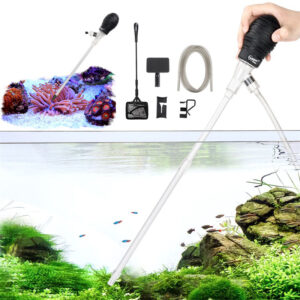
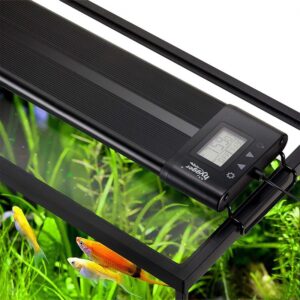
Leave a comment